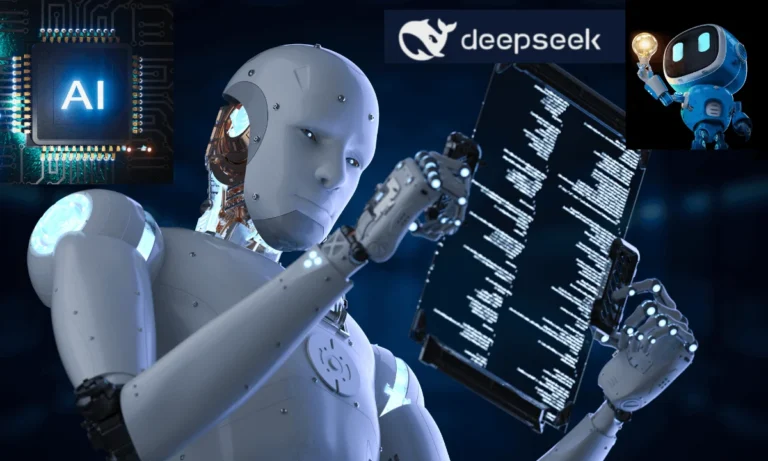DIY AI: Train a Model to Recognize Urdu Script with DeepSeek
Introduction: Embracing AI for Urdu Script Recognition
In today’s digital age, artificial intelligence (AI) is reshaping language processing, and Urdu script recognition is no exception. While mainstream AI tools often focus on English or other widely used languages, there’s a rising need to build localized models for native languages like Urdu. This article serves as a step-by-step guide to help developers, students, and AI enthusiasts train a model to recognize Urdu script using DeepSeek, an open-source framework designed to accelerate AI experimentation.
AI in 2030: What Pakistan’s Tech Landscape Will Look Like
Why Use DeepSeek for Urdu Script Recognition?
DeepSeek is an open-source LLM (Large Language Model) and training framework that offers flexible, scalable infrastructure for training custom language and vision models. Its modular design and support for transformer-based models make it ideal for working on non-Latin scripts such as Urdu.
Key advantages of DeepSeek:
- Open-source and free to use.
- Based on PyTorch for model customization.
- Easy integration with Hugging Face datasets.
- Supports both character-level and word-level recognition.
Breaking Barriers: Women in Tech Using DeepSeek AI to Innovate
Step 1: Prepare Urdu Script Dataset
The success of any machine learning model lies in quality data. For Urdu script recognition, you need a dataset containing Urdu characters, words, and handwritten or printed text images.
Sources to Gather Data:
- Urdu Handwriting Dataset (UHD): Contains handwritten Urdu characters and numerals.
- EMILLE Corpus: Includes Urdu text from newspapers, books, and social media.
- Custom Data Collection: Use mobile apps or scanners to gather handwritten Urdu samples.
Labeling the Data:
Each image or text sample should be labeled with its corresponding Urdu character or word. Tools like LabelImg, LabelStudio, or VGG Image Annotator can help with labeling.
Tip: Ensure diversity in font styles, sizes, and handwriting to increase model generalization.
How to Use AI for SEO: Boosting Your Pakistani Website’s Ranking
Step 2: Preprocess the Urdu Text and Images
Deep learning models require clean, uniform input. Preprocessing ensures that each image or text input is transformed consistently.
Preprocessing Steps:
- Convert images to grayscale.
- Resize images to a fixed dimension (e.g., 32×32 or 64×64 pixels).
- Normalize pixel values between 0 and 1.
- For text data, tokenize the Urdu script using UTF-8 encoding.
- Use data augmentation (rotation, scaling) to improve accuracy.
Use libraries like OpenCV, Pillow, or Albumentations to automate preprocessing.
AI for Social Good: DeepSeek’s Projects in Rural Pakistan
Step 3: Build Your Model Architecture with DeepSeek
Now it’s time to design your AI model. DeepSeek supports multiple architectures, but for Urdu script recognition, we recommend a CNN-RNN hybrid model or Vision Transformers (ViT).
Model Example: CNN + BiLSTM + CTC
- Convolutional Neural Network (CNN): Extracts features from images.
- Bidirectional LSTM (BiLSTM): Captures character sequences.
- CTC (Connectionist Temporal Classification): Used for sequence alignment and prediction.
Here’s a simplified structure in PyTorch using DeepSeek:
pythonCopyEditimport torch.nn as nn
class UrduRecognizer(nn.Module):
def __init__(self):
super(UrduRecognizer, self).__init__()
self.cnn = nn.Sequential(
nn.Conv2d(1, 32, 3, 1, 1),
nn.ReLU(),
nn.MaxPool2d(2)
)
self.lstm = nn.LSTM(input_size=32, hidden_size=128, num_layers=2, bidirectional=True)
self.fc = nn.Linear(256, num_classes) # num_classes = total Urdu characters
def forward(self, x):
x = self.cnn(x)
x = x.view(x.size(0), -1, x.size(1)) # Reshape for LSTM
x, _ = self.lstm(x)
x = self.fc(x)
return x
DeepSeek simplifies model training and logging, allowing you to define models in train_config.yaml and launch jobs efficiently.
Pakistani Farmers Share How AI Boosted Their Profits by 40%
Step 4: Train the Model Using DeepSeek Trainer
Once your model is ready, the next step is to train it. DeepSeek provides CLI tools and Python APIs to manage training pipelines efficiently.
Steps to Train:
- Define the training parameters in a YAML file: yamlCopyEdit
model: urdu_model optimizer: Adam learning_rate: 0.001 epochs: 30 batch_size: 64 - Run training using DeepSeek: bashCopyEdit
deepseek train --config train_config.yaml - Monitor metrics like accuracy, loss, and validation error during training via the console or TensorBoard.
Use GPU for faster training and DeepSeek’s distributed training for scalability.
Step 5: Evaluate the Urdu Script Recognition Model
After training, it’s critical to test the model on unseen Urdu script data. Use precision, recall, and F1-score as key evaluation metrics.
Tips for Better Evaluation:
- Split your dataset into 80% training and 20% testing.
- Use confusion matrix to identify misclassified Urdu characters.
- Include printed and handwritten samples in the test set.
DeepSeek AI in Action: Optimizing Karachi’s Traffic Management
Step 6: Deploy the Model for Real-Time Urdu Recognition
Deploy your trained model as an API or a mobile/desktop application.
Deployment Options:
- Flask or FastAPI: For web-based model APIs.
- ONNX or TorchScript: For converting the model to production-friendly formats.
- Android/iOS App: Use TensorFlow Lite or PyTorch Mobile for on-device recognition.
A sample API endpoint using Flask:
pythonCopyEditfrom flask import Flask, request
import torch
app = Flask(__name__)
model = torch.load('urdu_model.pth')
model.eval()
@app.route('/predict', methods=['POST'])
def predict():
file = request.files['image']
img = preprocess(file)
output = model(img)
prediction = decode_output(output)
return {'prediction': prediction}
AI for Content Creation: Write Blogs 10x Faster (Free Tools Included)
Bonus: Tips to Improve Urdu Script Recognition Accuracy
- Use Transfer Learning: Fine-tune a pre-trained Vision Transformer (ViT) model on your Urdu dataset.
- Increase data volume via synthetic Urdu text generation using Google Fonts or Urdu calligraphy styles.
- Use Attention Mechanisms for complex word sequences.
- Implement Language Models (LM) to validate word-level predictions contextually.
Success Story: AI-Driven Marketing Campaigns for Pakistani SMEs
Conclusion: Empowering Local AI Solutions
Training a model to recognize Urdu script using DeepSeek opens the door to building inclusive and accessible AI tools. Whether you’re building a handwriting recognition app, OCR system, or educational tool, this DIY approach empowers you to take control of the AI training pipeline. With DeepSeek’s powerful features and the growing availability of Urdu datasets, local language AI is no longer a dream — it’s your next project.
How DeepSeek AI Helped Reduce Energy Waste in Islamabad Offices
FAQs on Urdu Script Recognition with DeepSeek
Q1: Do I need a GPU to train my Urdu model?
While not mandatory, using a GPU significantly speeds up training and model optimization.
Q2: Can I use DeepSeek for printed and handwritten Urdu?
Yes. DeepSeek supports both, provided you supply the model with relevant training data.
Q3: Is DeepSeek free to use?
Yes, DeepSeek is an open-source AI framework and free for personal and commercial use.
Creating a Chatbot for Your Pakistani Website Using DeepSeek AI







